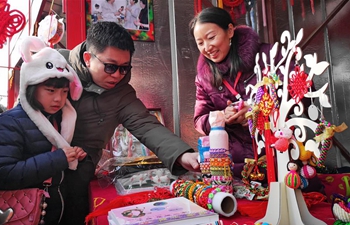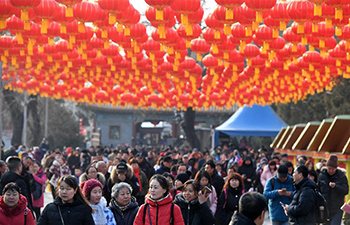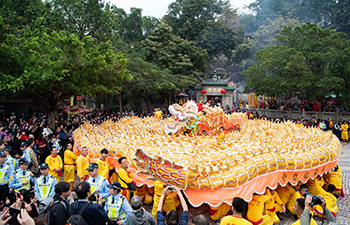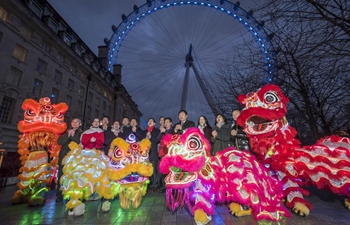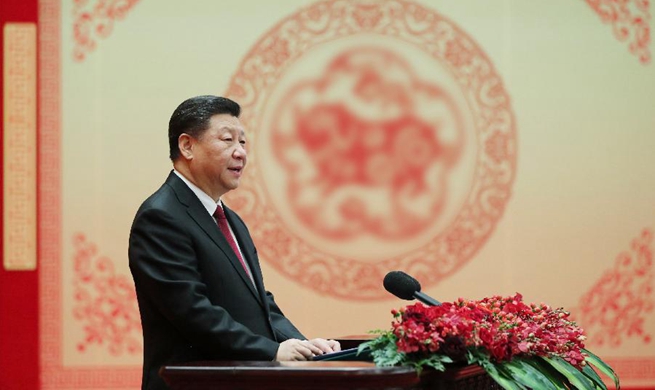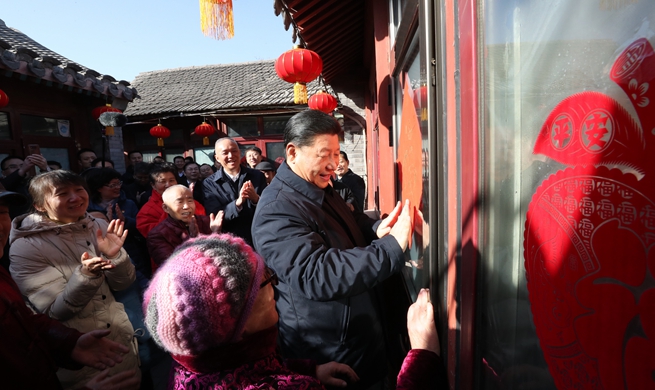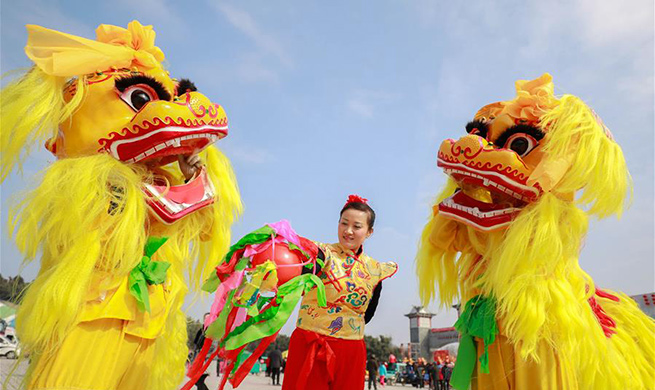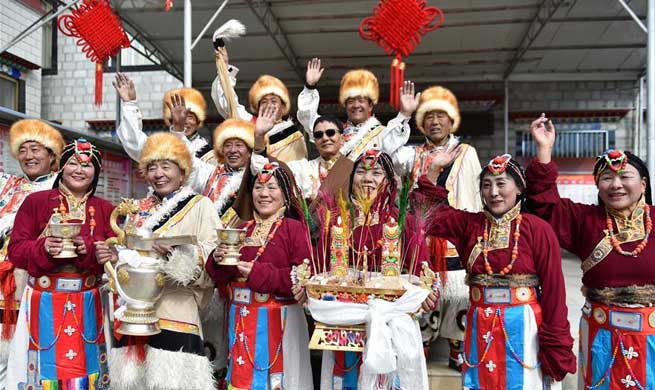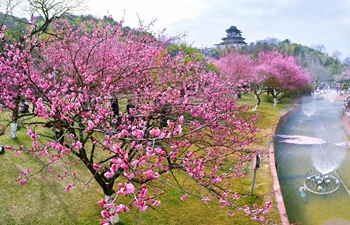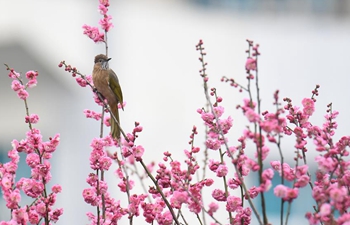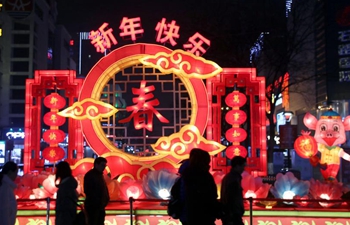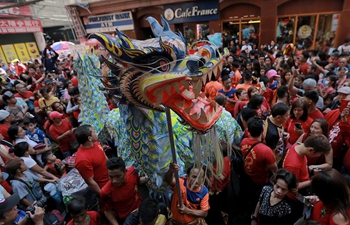by Xinhua writer He Leijing
NANJING, Feb. 5 (Xinhua) -- Just like Westerners decorating Christmas ornaments with colored bulbs, Chinese people light up Spring Festival with varied lanterns, which in the eyes of Jing Tianfu, a 71-year-old craftsman, represents joy and hope.
During the Spring Festival, lanterns of different shapes and styles are staged across Chinese parks and scenic spots, with families hanging out together to watch and celebrate.
"It's been a Chinese entertaining culture for thousands of years," Jing said. He has been making lanterns in the city of Wuxi, east China's Jiangsu Province, for nearly 40 years. His works are on display every Chinese holiday season.
This year, however, the aged craftsman seems a bit powerless. "Some neighbors asked me what I had prepared for this year's lantern show. I felt sad to admit that I only made two lanterns of pavilion shapes," Jing sighed.
Jing's skills of producing handmade lanterns have long been recognized among local neighborhoods. On the wall of his living room hangs a plaque that reads "Wuxi Intangible Cultural Heritage Project: Qingming Bridge Lantern."
In the 1980s, he brought his experience of making lanterns from his hometown and settled in Wuxi to open the city's first lantern workshop. And since then, every time there is a lantern exhibition, Jing has been invited to strut his stuff.
Jing is deft at making bridge-like lanterns. His "Qingming Bridge Lantern" has been officially listed as a special lantern project near the ancient canal of Wuxi due to its grandeur.
"Many film and television crews back then would come to me to customize the props. It was a booming business. But after post-production levels improved, the markets for craftsmen is mostly limited to lantern shows," Jing said.
Jing's peak time for his lantern business took place in his 40s. He not only set up lantern exhibitions for tourist sites in Wuxi, but also set foot in other cities and provinces to show his talent for making lanterns from small handheld ones to eight-meter-tall lantern landscapes.
"A lively lantern show can be a carnival participated in by the whole city," Jing said.
But he gradually realized a problem: As many places begin to outsource their lantern programs to advertising companies, the workshop-style craftspeople which rely on word-of-mouth face survival challenges.
The handmade lanterns require a complicated production process that involves drawing, designing, purchasing materials, pasting and painting. With the price increases of silk, iron wire and other materials, the cost also goes up.
"It is a time-consuming process and the profits are rather small. Many elderly craftsmen I knew have given up on the business even though they are inheritors of intangible cultural heritage," Jing said.
Jing said that it is natural for them to encounter a crisis in passing on the workmanship, as they lacked a modern enterprise management philosophy, and were generally aging. "But the low-cost plastic lanterns produced by machines are truly short of creativity and ingenuity," he said.
In Nanjing, capital of Jiangsu Province and less than 200 kilometers away from Wuxi, Qinhuai Lanterns are the first batch of the country's national intangible cultural heritage and attract millions of tourists to watch every year. This instills confidence in craftsmen like Jing.
In 2014, the Nanjing government took the lead in setting up a lantern culture company to offer a place for local craftsmen. "It is proof that traditional handmade lanterns can be developed under a modern enterprise model," Jing said.
"Lanterns have been passed down for centuries because people like them. In today's industrial society, traditional and handmade stuff with local features are getting more popular. With the right idea and social management, hope for the craftsmen of tomorrow will never fade away," Jing said.
But the priority for Jing right now is to find an apprentice. His original works of bridge, phoenix and pavilion lanterns are stored in almost every scenic spot in Wuxi, some even entering local museums and becoming exhibits.
"My new year's wish is that this craft can be passed on and my lanterns can shine again," he said.




